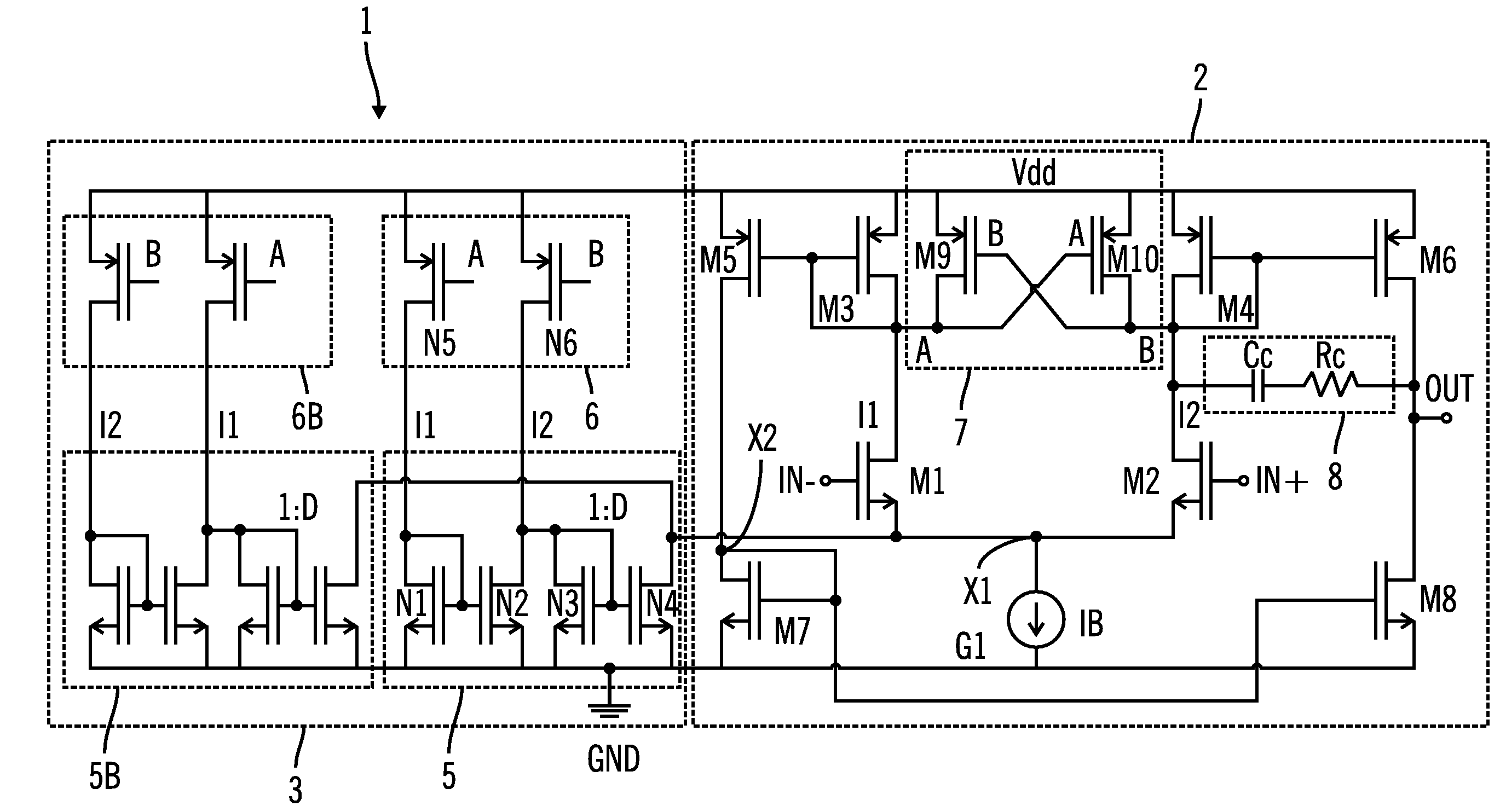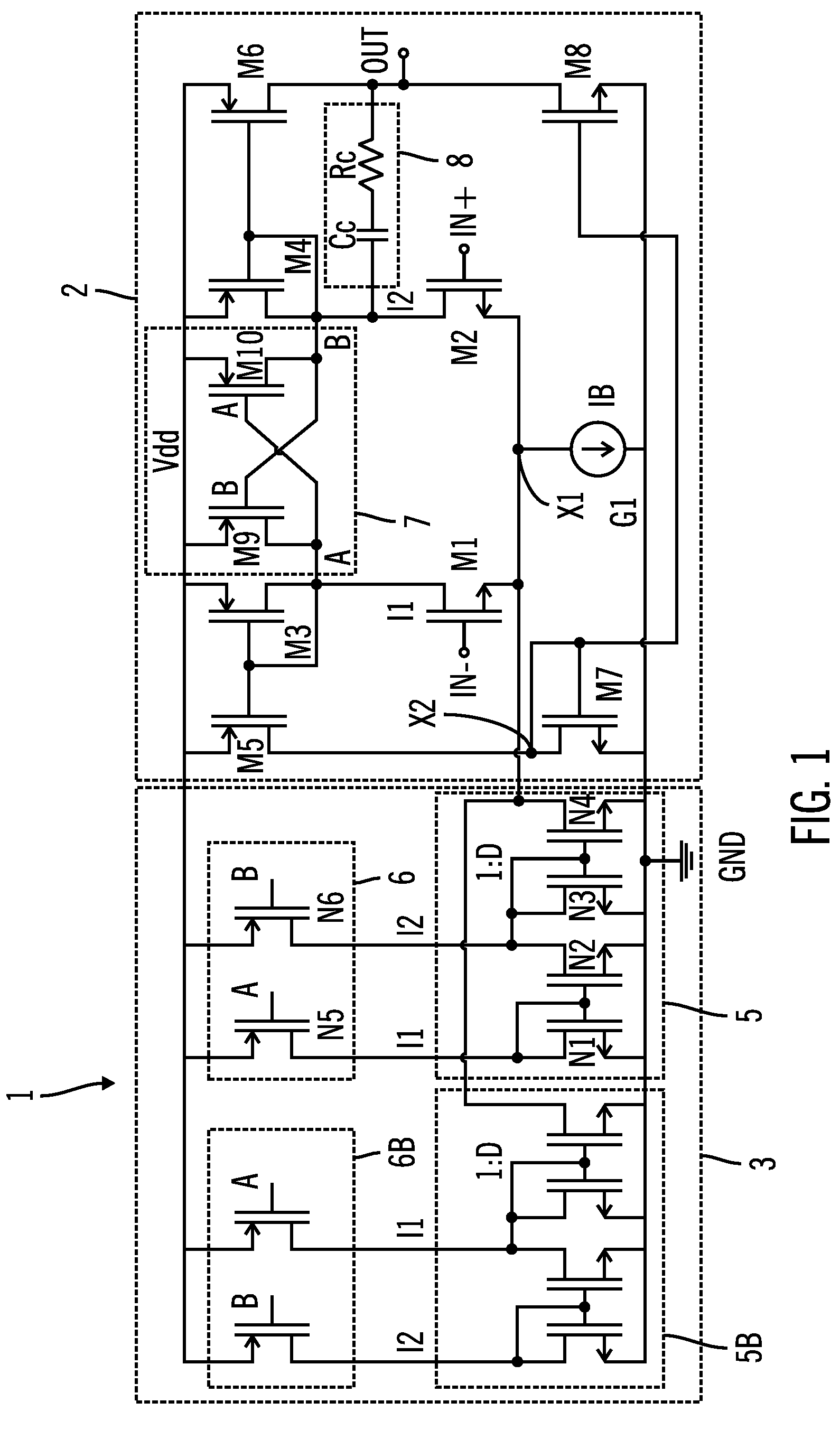Operational amplifier of class AB
an operation amplifier and amplifier technology, applied in amplifiers, amplifiers with semiconductor devices/discharge tubes, electric devices, etc., can solve the problems of poor behavior with large signals, complex mixed-signal integrated circuits, and even more critical power consumption optimization, so as to reduce power consumption and enhance dc-gain
- Summary
- Abstract
- Description
- Claims
- Application Information
AI Technical Summary
Benefits of technology
Problems solved by technology
Method used
Image
Examples
Embodiment Construction
[0025]Preferred embodiments of the present invention will be described in detail hereinbelow with reference to the attached drawings.
[0026]FIG. 1 shows an operational amplifier (or “op-amp”) according to a preferred embodiment of the present invention.
[0027]The op-amp 1 includes a core 2 and an adaptive bias block 3 connected between first and second voltage references, in particular a supply voltage reference Vdd and ground GND, and interconnected at a first common node X1.
[0028]According to this embodiment of the present invention, the core 2 is realized by an OTA (Operational Transconductance Amplifier), as shown in FIG. 2. More particularly, the core 2 is a CMOS OTA with a symmetrical input stage comprising first and second input transistors M1 and M2.
[0029]These input transistors M1 and M2 are connected between respective first and second internal nodes A and B and the first common node X1, and have control (or gate) terminals respectively connected to a first input terminal IN...
PUM
 Login to View More
Login to View More Abstract
Description
Claims
Application Information
 Login to View More
Login to View More - R&D
- Intellectual Property
- Life Sciences
- Materials
- Tech Scout
- Unparalleled Data Quality
- Higher Quality Content
- 60% Fewer Hallucinations
Browse by: Latest US Patents, China's latest patents, Technical Efficacy Thesaurus, Application Domain, Technology Topic, Popular Technical Reports.
© 2025 PatSnap. All rights reserved.Legal|Privacy policy|Modern Slavery Act Transparency Statement|Sitemap|About US| Contact US: help@patsnap.com



